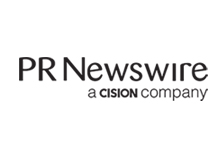Global Acromegaly and Gigantism Markets to 2029: Top Selling Drug to Enter the Market will be Camurus' Octreotide LA
DUBLIN, Dec. 4, 2020 /PRNewswire/ -- The "Acromegaly and Gigantism - Global Drug Forecast and Market Analysis to 2029" report has been added to ResearchAndMarkets.com's offering.
http://mma.prnewswire.com/media/539438/Research_and_Markets_Logo.jpg
The acromegaly and gigantism market was worth $1.4B in 2019. The market is expected to grow at a CAGR of 4.4% from 2019 to 2029, reaching a global value of $2.2B.
Acromegaly and gigantism are rare disorders of the pituitary gland characterized by the hypersecretion of growth hormone (GH). This GH excess is often a result of a benign GH-secreting pituitary adenoma. Rarely, tumors in other organs can secrete growth hormone-releasing hormone (GHRH), leading to elevation in GH levels in the serum.
This triggers the release of anti-apoptotic and mitogenic peptide hormone, insulin-like growth factor 1 (IGF-1). While both acromegaly and gigantism are complications of uncontrolled GH levels, the presentation of the two hormonal diseases is very different. GH excess beginning in adulthood is known as acromegaly and is characterized by an insidious onset and a delayed diagnosis, whereas GH excess beginning during childhood is known as gigantism and is characterized by a dramatic acceleration of growth, leading to an unusually tall stature.
Symptoms of acromegaly and gigantism include the development of abnormally large hands and feet, an enlarged tongue, hyperhidrosis, joint pain, tiredness, and headaches. Surgery to remove the pituitary tumor is often offered to patients with acromegaly or gigantism. Pharmacotherapeutic approaches may be employed to increase the efficacy of surgery, or as a monotherapeutic strategy in cases where surgical procedures are not appropriate for the patient. Somatostatin is a cyclic polypeptide hormone that inhibits the secretion of a number of hormones, including that of GH. First-line pharmaceutical products used to treat acromegaly and gigantism are typically somatostatin analogs (SSAs) because the natural version of the hormone has a very short half-life and cannot bring about sustained suppression of GH.
In 1988, Novartis' Sandostatin, became the first SSA to be approved by the FDA. The therapy, which is injected up to four times daily marked the advent of a new effort by drug developers to produce products that are administered less frequently. Since then, the SSA drug class has expanded to include therapies such as Novartis' Sandostatin LAR (long-acting repeatable) Depot (octreotide acetate for injectable suspension), Novartis' Signifor LAR (pasireotide), and Ipsen's Somatuline (lanreotide acetate) Depot which are all injected on a monthly basis. Although SSAs dominate the treatment landscape, Pfizer's GH inhibitor Somavert (pegvisomant) and dopamine agonists, bromocriptine mesylate and cabergoline have also penetrated the market and are used in combination with first-line drugs.
The seven pharmaceutical markets (7MM) covered in this report and forecast model are the US, France, Germany, Italy, Spain, the UK, and Canada. The publisher estimates that drug sales for acromegaly and gigantism in 2019 were approximately $1.4B across the 7MM. Over the 10-year forecast period, the market is expected to reach $2.2B in 2029, increasing at a CAGR of 4.4%. Growth in the market will be driven by the launch of longer-acting somatostatin analogs, oral therapies, and growth hormone receptor inhibitors, which are used in combination with first-line drugs to provide an effective treatment option for patients with intractable disease.
Key Highlights
-- The publisher projects that the marketed for acromegaly and gigantism
will experience growth driven by the launch of oral therapies,
injectable somatostatin analogs that are administered less frequently
than the market-leading product, which is Novartis' Sandostatin LAR
Depot.
-- Low disease awareness and delayed diagnosis is the most significant
unmet need in this therapy area. Lack of physician and patient education
means that a large percentage of patients treat the symptoms of these
conditions without being able to address the cause of the
endocrinological abnormalities for many years. Additionally, more
patients are expected to undergo surgery which effectively cures the
disease in patients whose pituitary tumors can be successfully excised.
Market exclusivity for major brands such as Novartis' Signifor
(pasireotide) and Ipsen's Somatuline Depot (lanreotide acetate), will
also be lost during the forecast window, which will allow competitor
drug developers to consider producing generic formulations of these
market-dominating somatostatin analogs.
-- No drugs are being specifically developed for gigantism which means that
some pipeline agents will not benefit from being used to treat pediatric
patients. Oral therapies such as Chiasma's Mycapssa (octreotide acetate)
and Crinetics' paltusotine are expected to be used to treat younger
patients who may not be candidates for surgery or intramuscular
injections. For this reason, and the fact that both of these drugs will
launch in multiple markets, Mycapssa and paltusotine are expected to
become some of the top-selling therapeutics that will enter the
acromegaly market between 2019 and 2029.
-- Growth in the market will be driven by the launch of growth hormone
receptor inhibitors. Only one marketed drug (Pfizer's
Somavert/pegvisomant) targets this signaling pathway. Although Pfizer's
Somavert is highly effective in inducing biochemical control of
acromegaly, the high cost of therapy has led some regulatory bodies to
restrict its use, denying a subset of patients from access to this
treatment option. Antisense Therapeutics' atesidorsen sodium, and Ionis
Pharma's IONIS-GHRLRx are growth hormone receptor inhibitors that are
expected to be injected less frequently than Pfizer's Somavert.
Furthermore, these drug candidates represent a new molecule type
entering the market within the forecast window, as no antisense
therapies are currently available for the management of acromegaly and
gigantism.
-- A disadvantage of the market-leading drug, Sandostatin LAR, is that this
therapy is injected via the intramuscular route of administration which
is associated with pain and discomfort. Furthermore, patients typically
receive injections in a clinical setting which is can be inconvenient
for individuals who do not live within easy reach of their healthcare
provider.
-- Drug developers are also focusing on producing self-administrable
therapies that can increase patients' compliance. These therapeutics
will reduce the need for patients to attend frequent hospital
appointments in order to receive treatment.
-- The top selling drug to enter the market in the forecast period will be
Camurus' octreotide LA, which is expected to become the first
long-acting subcutaneously administrable formulation of octreotide. The
largest pharmacotherapy market for acromegaly and gigantism in 2019 was
the US, which made up 75% of sales in the base year of the forecast
window. The dominance of this market will continue, as most patients
with acromegaly in the 7MM are diagnosed and treated in the US. In 2029,
the US will generate $1.6B.
Key Topics Covered:
1 Table of Contents
1.1 List of Tables
1.2 List of Figures
2 Acromegaly and Gigantism: Executive Summary
2.1 Steady Growth Expected in the Acromegaly and Gigantism Market from 2019-2029
2.2 Pharmaceutical Companies Are Focused on Developing Self-Administrable, Convenient Therapies
2.3 Polypharmacy Will Become Increasingly Common in the Management of Patients With Intractable Disease
2.4 Lack of Disease Awareness Causing Delays in Diagnosis Is a Globally Prevalent Unmet Need
2.5 Oral Therapies and Long-Acting Injectable Somatostatin Receptor Agonists Will Become Top-Selling New Market Entrants in 2029
2.6 What Do Physicians Think?
3 Introduction
3.1 Catalyst
3.2 Related Reports
4 Disease Overview
4.1 Etiology and Pathophysiology
4.1.1 Etiology
4.1.2 Pathophysiology
4.2 Classification or Staging Systems
4.3 Prognosis and Quality of Life
5 Epidemiology
5.1 Disease Background
5.2 Risk Factors and Comorbidities
5.3 Global and Historical Trends
5.4 Forecast Methodology
5.5 Epidemiological Forecast for Acromegaly, 2019-2029
5.6 Discussion
6 Disease Management
6.1 Overview
6.2 Diagnosis
6.3 Treatment
6.3.1 Treatment Guidelines
6.3.2 Non-pharmacotherapeutic Treatment Options
6.3.3 Pharmacotherapy
6.4 US
6.5 5EU
6.6 Canada
7 Competitive Assessment
7.1 Overview
8 Unmet Needs and Opportunity Assessment
8.1 Overview
8.2 Increasing Disease Awareness Among Patients and Physicians
8.3 Greater Control Over Treatment-Related Costs Blocking Access to Essential Therapies
8.4 Improving the Efficacy and Side-Effect Profiles of Pharmaceutical Products
8.5 Making Drug Administration More Manageable for Patients
9 Pipeline Assessment
9.1 Overview
9.2 Somatostatin Receptor Agonists
9.3 Antisense Therapy Growth Hormone Receptor Inhibitors
9.4 Early-Stage Pipeline Products
10 Current and Future Players
11 Market Outlook
Companies Mentioned
-- Novartis
-- Ipsen
-- Pfizer
-- Recordati
-- Chiasma
-- Roche
-- Sun Pharma
-- Sandoz
-- Mylan
-- Ionis Pharma
-- Antisense Therapeutics
-- Crinetics Pharma
-- Italfarmaco
-- DexTech Medical
-- Camurus
-- Enesi Pharma
-- Paladin Labs
-- Strongbridge Biopharma
-- Dauntless Pharmaceuticals
-- Aquestive Therapeutics
-- GeneScience Pharmaceuticals
-- Ascil Proyectos
-- Glide Pharmaceuticals
-- Aspireo Pharmaceuticals
For more information about this report visit https://www.researchandmarkets.com/r/6ye6bn
Research and Markets also offers Custom Research services providing focused, comprehensive and tailored research.
Media Contact:
Research and Markets
Laura Wood, Senior Manager
press@researchandmarkets.com
For E.S.T Office Hours Call +1-917-300-0470
For U.S./CAN Toll Free Call +1-800-526-8630
For GMT Office Hours Call +353-1-416-8900
U.S. Fax: 646-607-1907
Fax (outside U.S.): +353-1-481-1716
View original content:http://www.prnewswire.com/news-releases/global-acromegaly-and-gigantism-markets-to-2029-top-selling-drug-to-enter-the-market-will-be-camurus-octreotide-la-301186479.html
SOURCE Research and Markets




